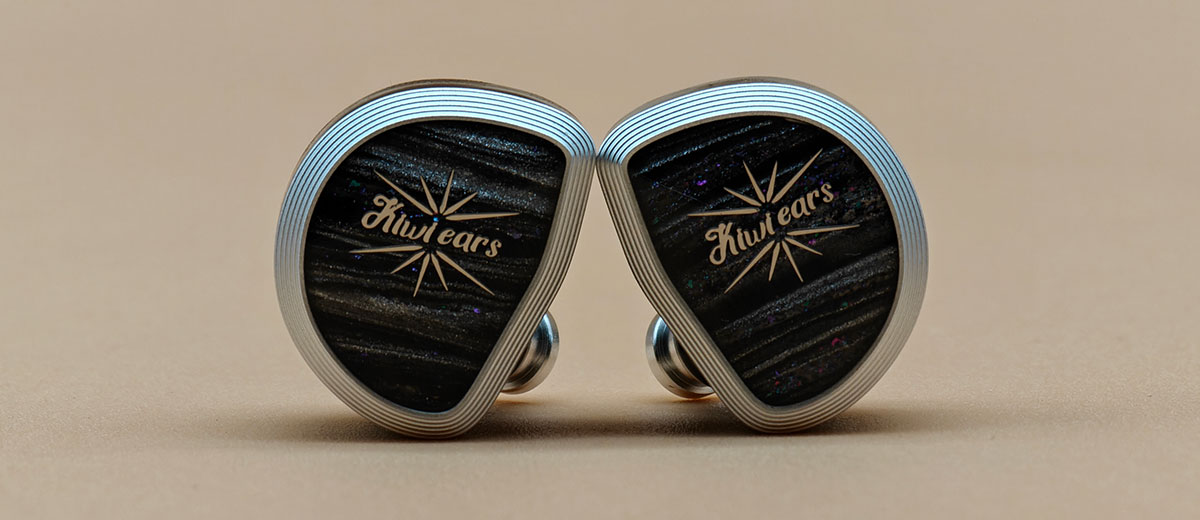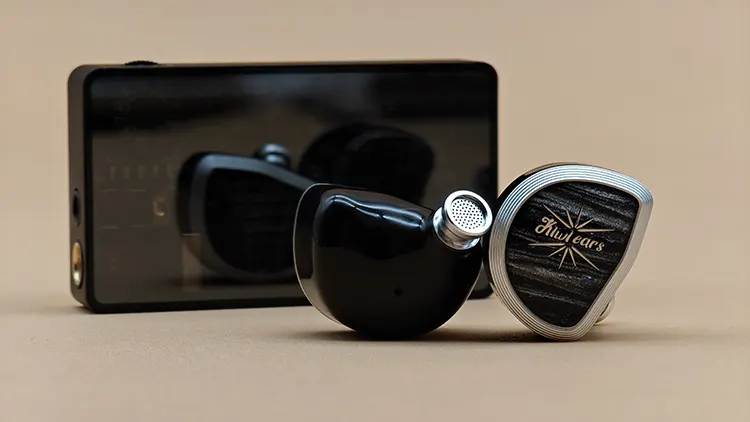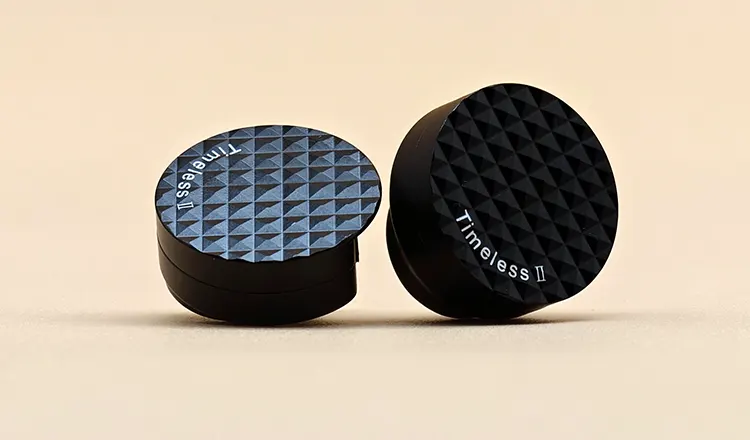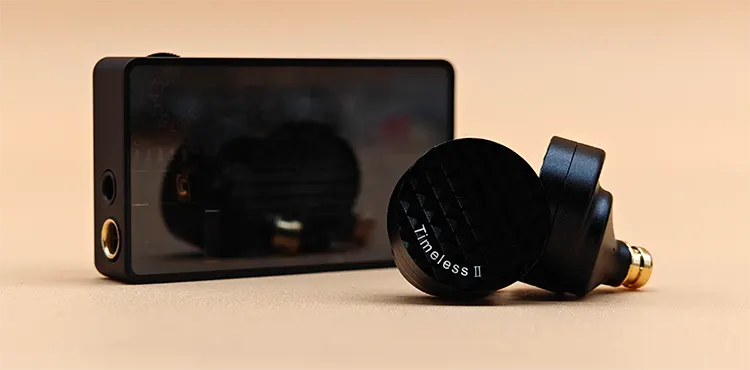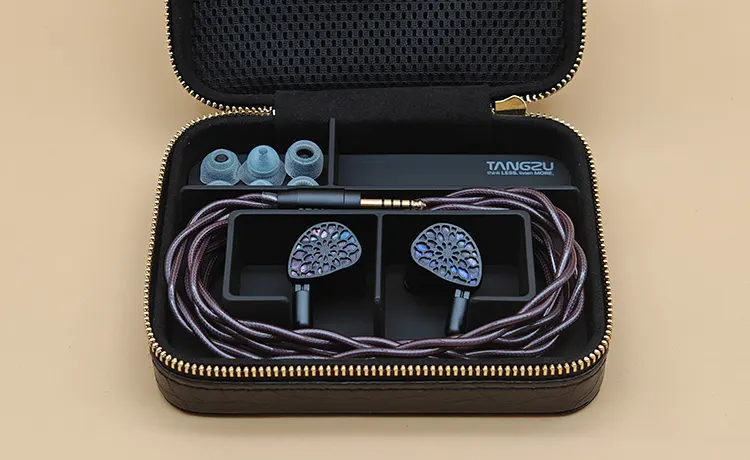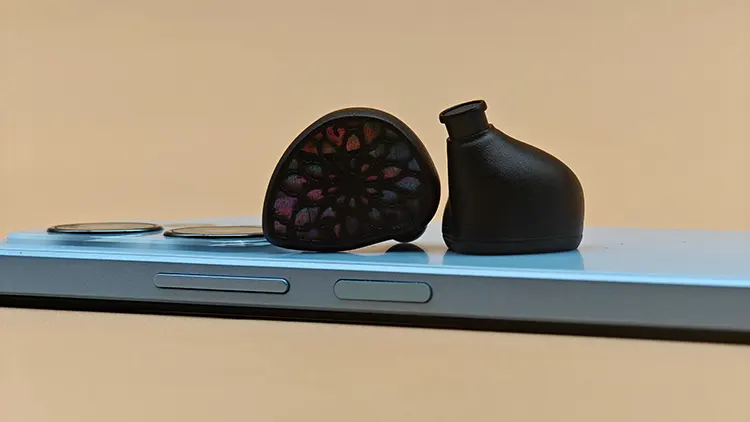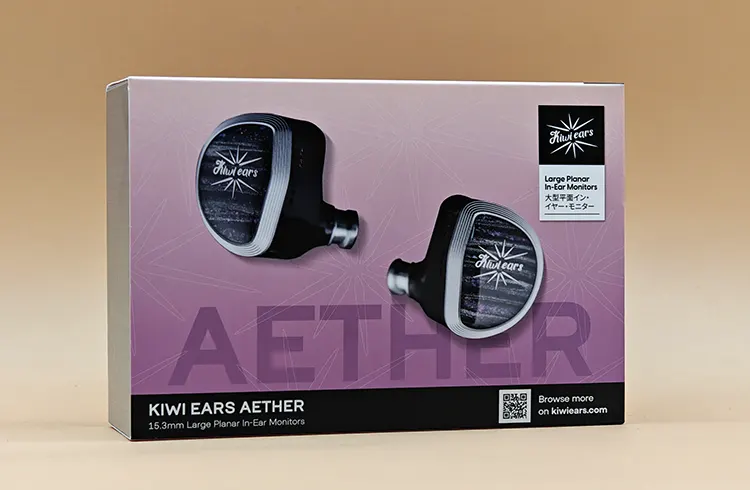Synergy
Efficiency
The Kiwi Ears Aether has a sensitivity of 106.5 dB SPL/mW and an impedance of 14Ω, allowing it to pair easily with nearly any device. However, despite these accessible specifications, the Aether noticeably benefits from more powerful sources and higher listening volumes.
It’s disappointing that the stock cable comes only with a 3.5mm termination, as the Aether’s performance improves when paired with a balanced 4.4mm cable.
While you might need to push the volume to around 60% or higher for optimal sound, there are otherwise no glaring issues affecting the listening experience.
At lower volumes, the midrange takes the hardest hit, losing some of its excellent note definition and resulting in a flatter presentation.
Interestingly, bass punchiness and treble detail retrieval remain strong even at these lower levels, maintaining their presence remarkably well.
When pushed to higher volumes, the midrange regains its clarity and natural tonal balance, offering refined and lifelike vocals once more.
The midbass punch sees a notable increase as well, injecting energetic dynamics without sacrificing the clarity or control that makes the Aether stand out.
Pairings
The Kiwi Ears Aether can be picky with the sources it uses, but as long as it’s able to give it enough power, there won’t be any problems. The midrange and bass are affected the most by different sources, while the treble remains the same despite the changes.
My daily driver, the Colorfly CDA-M2, with its Cirrus Logic CS43198 chip, colors the Aether’s vocals by making it more clinical but its note weight thinner in exchange. It slightly boosts how much vocal nuances it’s able to get, but it can sound sharper than it normally is.
When paired with the HeartField R1, an R2R DAC-circuit device, the midrange gets more heft to it, making the vocals more natural, thicker, and warmer.
Unfortunately, the bass sounds messier than normal, making the excellent control and cleanliness of its bass worse, even though it’s more potent.
Using the FiiO JA11, a portable dongle DAC connected to my phone, there wasn’t much change to the overall sound. It stays faithful to the original sound of the Aether, but I did have to put the volume around 70% to get the same performance.
Select Comparisons
7Hz Timeless II
Technical
The 7Hz Timeless II features an upgraded 14.5mm planar magnetic driver, an improvement over the original Timeless’ 14.2mm driver. It also introduces dual-sided silver alloy-coated diaphragms, marking a first in planar IEM technology.
These advanced diaphragms are combined with dual-sided N52 magnet arrays for a stronger and more uniform magnetic field. According to 7Hz, this pairing significantly enhances driver responsiveness, setting a new benchmark in their planar technology.
Design
The 7Hz Timeless II retains the iconic design of its predecessor with a lightweight black circular shell and faceplate. Its updated faceplate now sports a reflective geometric pattern and simplified branding, showcasing only “Timeless II” for a cleaner look.
New additions include four interchangeable tuning nozzles, providing sound customization, and a shift from MMCX connectors to 0.78mm 2-pin connectors for easier cable swapping.
Multiple vents strategically placed on the shell help manage internal pressure, ensuring comfortable long-term wear.
Performance
Despite the smaller planar driver, the 7Hz Timeless II matches the Kiwi Ears Aether in bass quality, though their approach differs. The Timeless II provides a more pronounced subbass rumble, albeit slightly messy, whereas the Aether counters with tighter, cleaner control.
Midbass punch feels quite similar, but the Aether edges ahead by delivering a noticeably stronger and more engaging impact. While the Timeless II keeps things heavier and satisfying, the Aether’s punch simply carries more control and accuracy.
In the midrange, the two diverge clearly, with the Timeless II presenting vocals more forward and energetically, compared to the Aether’s smoother and more neutral vocal positioning.
However, the Timeless II occasionally introduces sharpness and grating tones, whereas the Aether maintains consistently smooth and comfortable vocals.
Both avoid the metallic planar timbre, providing natural and realistic vocal reproduction, yet the Timeless II’s presentation can lean clinical and analytical. In contrast, the Aether offers a more musical and warmer sound that’s easier to listen to for longer periods.
Detail retrieval favors the Timeless II with slightly enhanced airiness, but it presents cymbals with a somewhat artificial tone. The Aether handles treble more naturally, especially with percussion instruments, showcasing more realistic decay and timbre.
While the Timeless II offers a wider and taller soundstage, both IEMs share a similar limitation in depth. However, imaging accuracy and immersive staging are better executed by the Aether, placing sounds with pinpoint precision.
Tangzu Zetian Wu Legend
Technical
The Tangzu Zetian Wu Legend uses a unique dual-planar setup, pairing a 14.2mm main planar driver with an additional 6mm flat diaphragm planar driver.
The primary driver covers bass to treble, while the smaller driver enhances the upper treble and air frequencies for improved clarity and detail.
Tangzu introduced this dual-driver arrangement to reduce workload on the main driver, optimizing overall sound performance. Although workload issues weren’t present in the original Zetian Wu, this addition refines precision and clarity in the Legend’s sound.
Design
The Tangzu Zetian Wu Legend showcases a durable yet comfortable aluminum alloy shell in solid black, highlighted by a lotus-inspired faceplate design.
The faceplate features an intricate lotus cutout revealing a colorful abalone-like centerpiece, shifting from purple hues to vibrant rainbow colors depending on lighting and angle.
This design not only offers visual appeal but also symbolically associates with good fortune, as abalones represent luck in Chinese culture. Multiple vents are strategically placed on the smooth matte shell to effectively manage air pressure and maintain comfort.
Performance
The Kiwi Ears Aether takes the lead in bass, offering a more impactful and refined low-end performance. In contrast, the Tangzu Zetian Wu Legend provides a subtler bass response, which can feel less lively and engaging.
Subbass on the Zetian Wu Legend lacks the authoritative rumble and depth of the Aether, falling short in terms of actual presence. Its midbass also struggles, missing out on the precise control and clarity that the Aether easily delivers.
In the midrange, the Zetian Wu Legend brings forward sharper, more detailed vocals, but this heightened clarity comes with some grating harshness. The Aether counters this with a smoother, more relaxed presentation, delivering vocals comfortably without sacrificing musicality.
Planar timbre is noticeably more evident on the Zetian Wu Legend, resulting in vocals and instruments that sound slightly unnatural and metallic. The Aether avoids this pitfall, presenting a more lifelike and realistic midrange without the Zetian Wu Legend’s troublesome sibilance.
However, the Zetian Wu Legend strikes back decisively in treble, offering greater detail retrieval and more pronounced air than the Aether.
While this enhanced extension provides impressive clarity, it introduces sibilance and artificial brightness, particularly noticeable on cymbals, unlike the smoother, more natural treble of the Aether.
Soundstage width slightly favors the Zetian Wu Legend, although both share a similarly limited vertical staging. Yet, imaging is where the Aether triumphs, excelling with superior accuracy and spatial placement, creating a noticeably more immersive listening experience.
My Verdict
Kiwi Ears has set a new benchmark for competitively priced single planar IEMs with the Aether, featuring the largest planar driver in the market and delivering a standout bass performance.
Its refined midrange, smooth treble, and pinpoint imaging ensure a natural, immersive listening experience free from harshness or fatigue.
Though its size and accessories might not be ideal, the Aether’s exceptional bass control, musical tuning, and lifelike timbre more than compensate for it.
If you want a planar IEM with powerful bass, immersive imaging, and a fatigue-free listening experience, the Aether is an easy choice to consider.
Kiwi Ears Aether Technical Specifications
- Driver Type: One (1x) 15.3mm planar driver
- Plug: 3.5mm unbalanced 0.78mm 2-pin
- Frequency Response: 20Hz – 20kHz
- Impedance: 14-ohms
- Sensitivity: 105dB SPL/mW




